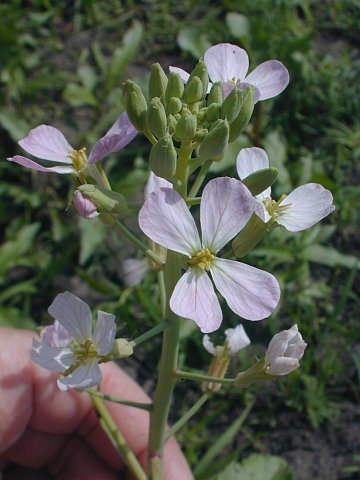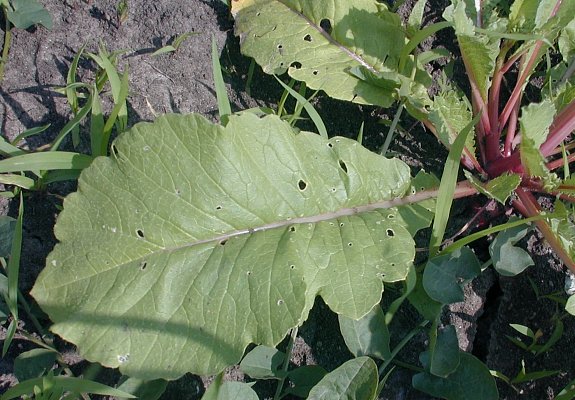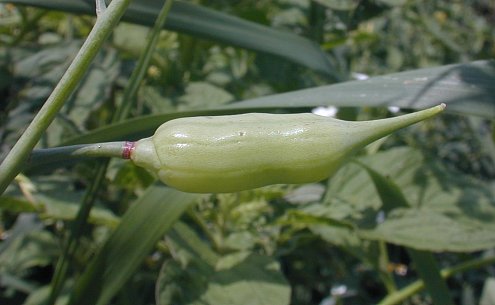Description: This annual or biennial plant consists of a rosette of leaves; somewhat later, it bolts and produces flowering stems up to 2½' tall. The basal leaves are up to 7" long and 2½" across; they are oblanceolate, coarsely crenate, and pinnately lobed. These lobes may be shallow or deep; the terminal lobe is always the largest. The surface of the basal leaves is usually rough from stiff hairs. The central stem is often reddish at the base, but light green elsewhere; it is either glabrous or covered with scattered stiff hairs. The upper side stems are very similar, except that there is often a red ring where they branch from the central stem. The alternate leaves on the stems are similar in appearance to the basal leaves, except that they are smaller, less likely to be deeply lobed, and narrowly ovate in shape.

The central and
upper stems terminate in racemes of flowers. Each flower is 1/3–1/2"
(8-12 mm.)
across, consisting of 4 pink or light purple petals, 4 light green
sepals that are linear-oblong, a central pistil, and several stamens
with yellow anthers. The blooming period occurs during the summer and
lasts about 1–1½ months. Each flower is replaced by a silique that
contains 2-3 seeds. This silique is rather short and spongy, but it has
a long beak. There is very little constriction between the seeds, if
any. The seeds are oval-shaped, slightly flattened, and reddish brown.
The root system consists of a stout taproot that is somewhat fleshy. It
is often reddish, but other color forms occur. This plant spreads by
reseeding itself.
Cultivation:
The preference is full sun and moist to mesic soil that is fertile and
loamy. The Garden Radish also does well in slightly sandy soil if it is
sufficiently moist and fertile. It develops rapidly from seed during
the spring and bolts during hot summer weather. The leaves often have
holes from various insect pests.

Range &
Habitat:
While this plant is often grown in vegetable gardens, it is uncommon to
find the non-native Garden Radish in the wild. According to official
records, it
has naturalized in only a few counties (see Distribution
Map). Habitats include dumps, edges of gardens, areas along
roadsides and railroads, and waste areas. The preference is disturbed
habitats, where this plant usually doesn't persist. The Garden Radish
probably originated from somewhere in Asia; it was cultivated as a
vegetable by the Ancient Egyptians several thousand years ago.
Faunal Associations:
The flowers attract small bees, flower flies, and White butterflies,
including Pieris rapae (Cabbage White) and Pontia
protodice (Checkered White). The caterpillars of these
butterflies may feed on the foliage, although other members of the
Mustard family with smoother leaves appear to be preferred. Rabbits
occasionally eat the basal leaves and lower leaves of the flowering
stems.

Photographic
Location:
An abandoned area of a vegetable garden in Urbana, Illinois.
Comments:
This familiar vegetable is eaten primarily for its fleshy taproot,
which has a peppery flavor. The foliage can be eaten as well, but it is
somewhat coarse. Many different cultivars have been developed, and
escaped plants may vary somewhat in the appearance of their foliage and
taproots. Another species, Raphanus raphanistrum
(Wild Radish), has a similar appearance to Garden Radish. However, Wild
Radish has yellow flowers and its siliques have 4-10 seeds. The
siliques of Wild Radish become constricted between the seeds with
maturity, and they tend to be a little longer and more slender than the
siliques of Garden Radish.